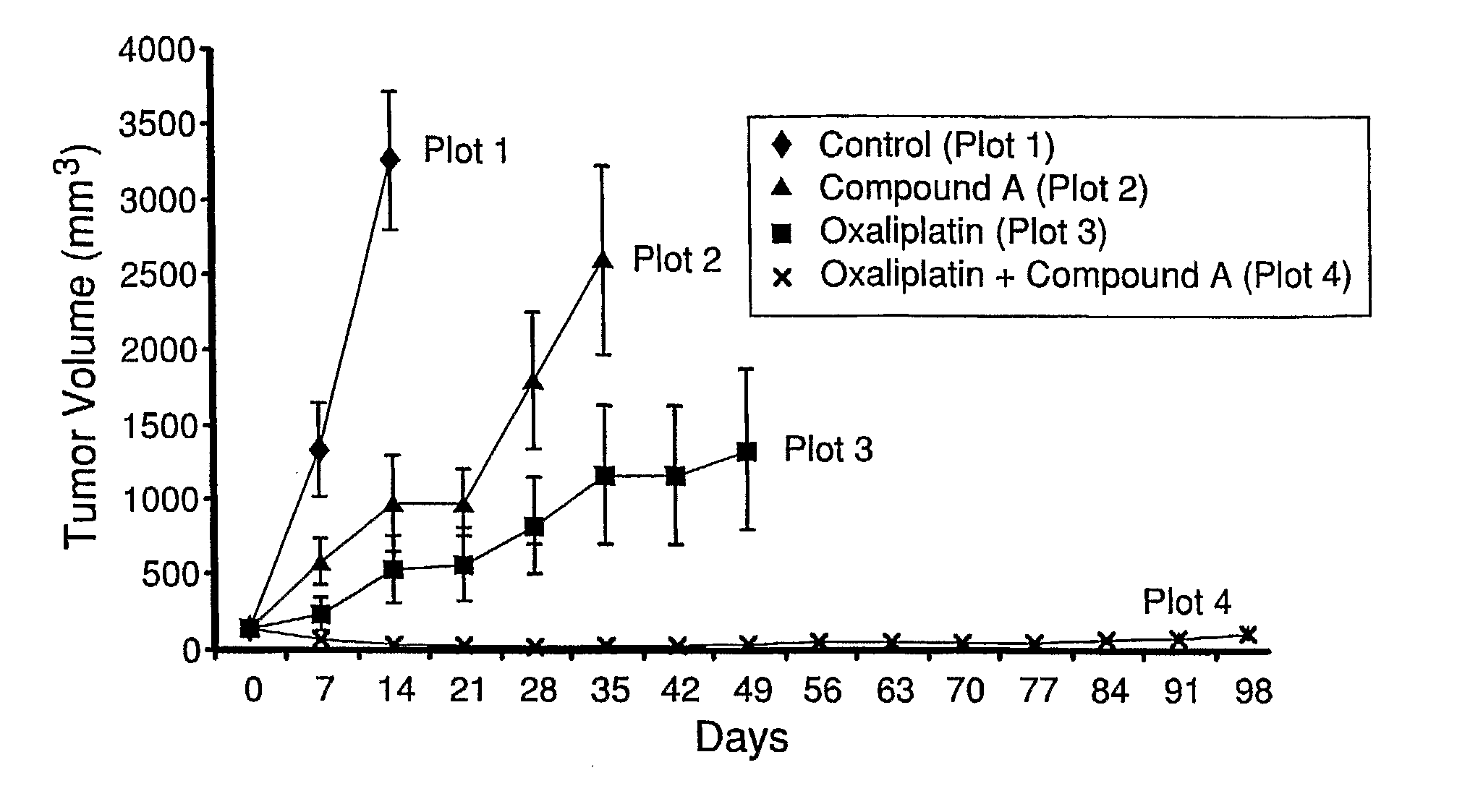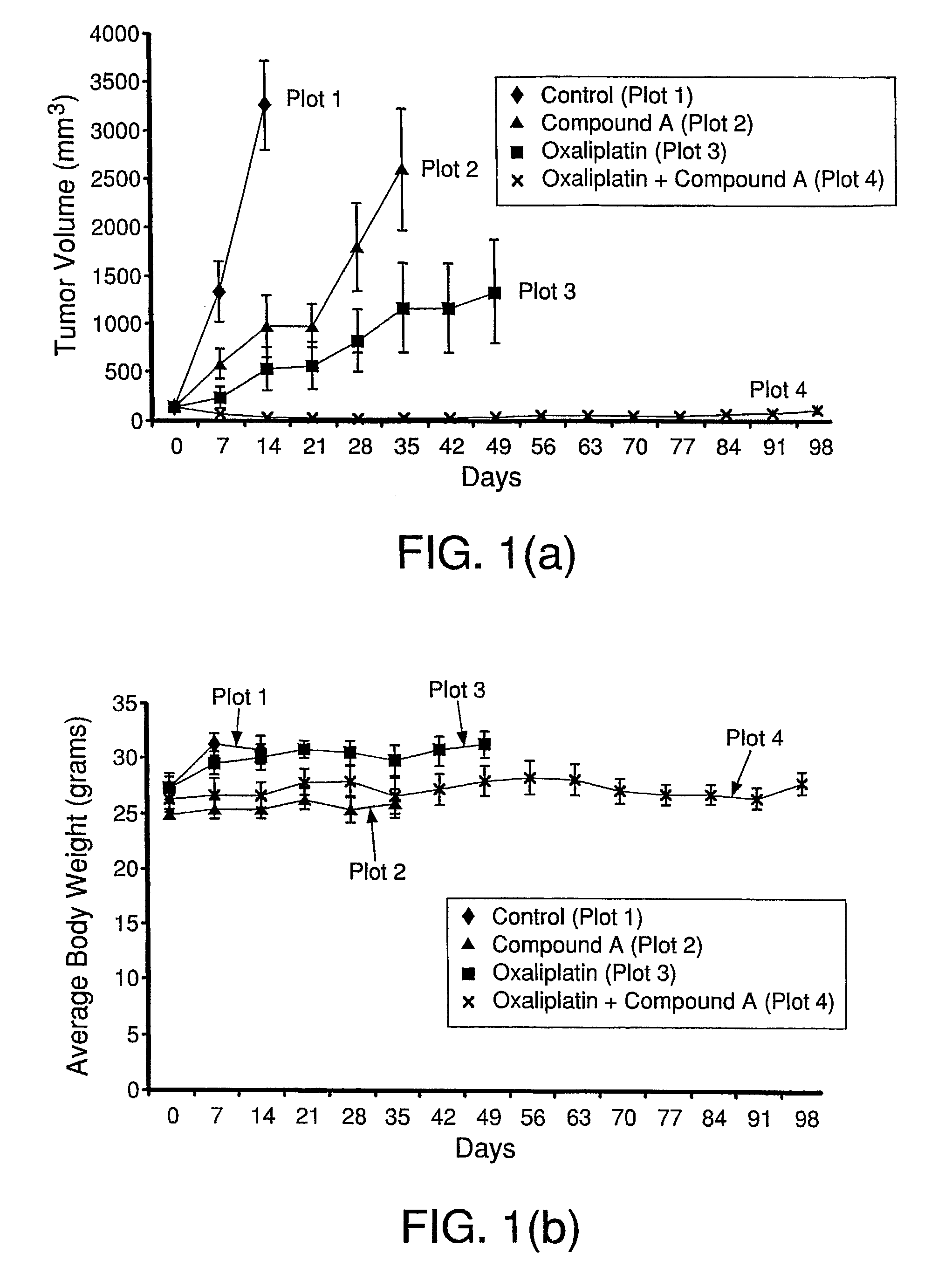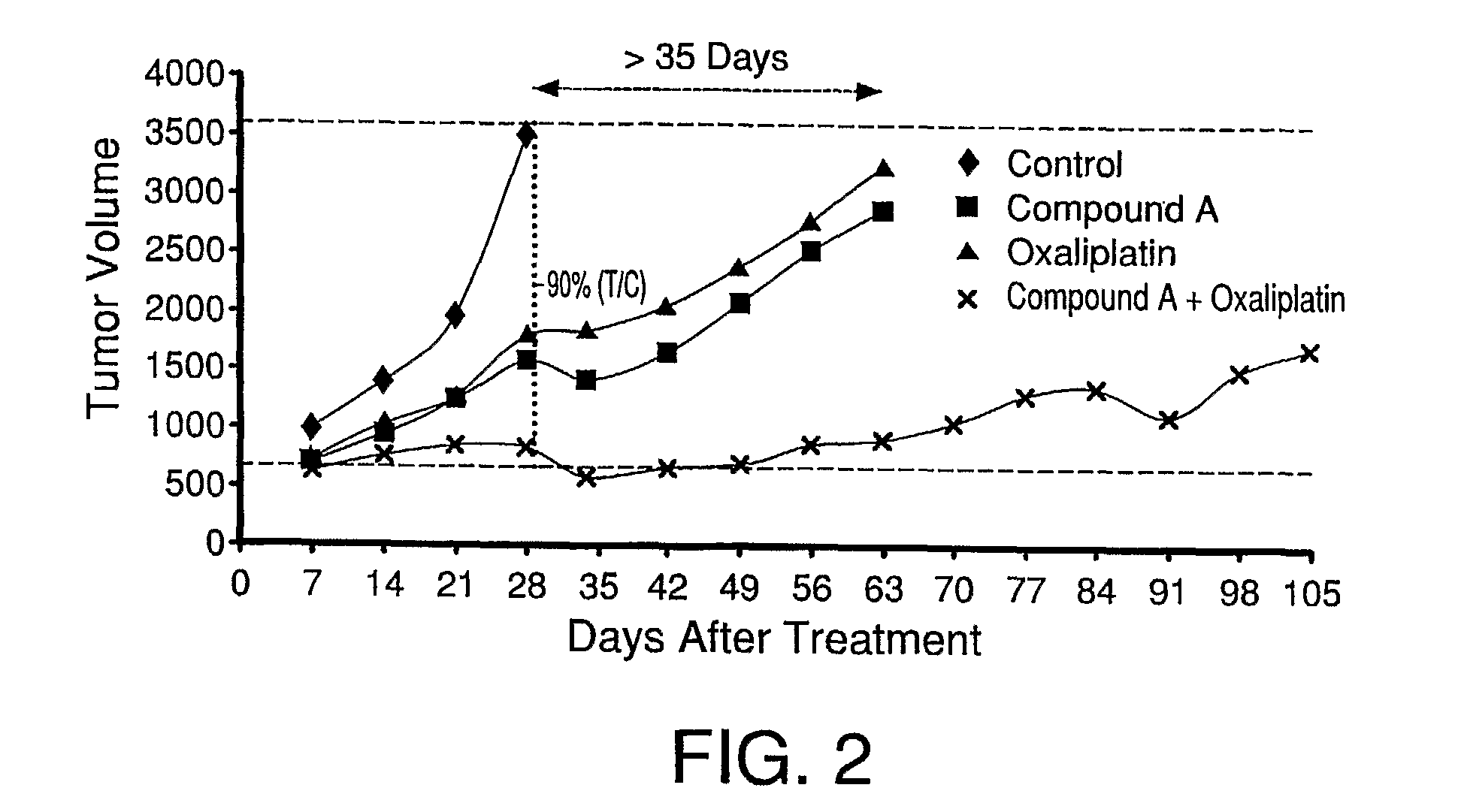Composition and Methods For the Treatment of Proliferative Diseases
a proliferative disease and compound technology, applied in the field of compound therapy, can solve the problems of limited patient dose, limited use of agents, and limiting toxic effects of anthracyclines, so as to reduce tumor growth, slow tumor growth, and reduce tumor growth. the effect of the rate of tumor growth
- Summary
- Abstract
- Description
- Claims
- Application Information
AI Technical Summary
Benefits of technology
Problems solved by technology
Method used
Image
Examples
example 1
Synthesis of (E)-2-(5-((2,4,6-trimethoxystyrylsulfonyl)methyl)-2-methoxyphenylamino)acetic Acid
[0114]A. Methyl 2-(5-((2,4,6-trimethoxystyrylsulfonyl)methyl)-2-methoxyphenylamino)acetate
[0115]To a stirred solution of methyl bromoacetate (5 mmol) and sodium acetate (5 mmol) in methanol (20 mL) was added (E)-5-((2,4,6-trimethoxystyrylsulfonyl)methyl)-2-methoxybenzenamine (1 mmol). The resulting mixture was heated to reflux temperature. The heated mixture was stirred at reflux temperature for 12 to 15 h. The heated mixture was then cooled and poured onto water ice (about 100 g). A precipitate formed. The precipitate was separated by filtration to provide the product in 85% yield. m.p. 182-185° C.
B. (E)-2-(5-((2,4,6-Trimethoxystyrylsulfonyl)methyl)-2-methoxyphenylamino)acetic acid
[0116]Methyl 2-(5-((2,4,6-trimethoxystyrylsulfonyl)methyl)-2-methoxyphenylamino)acetate (1 g) was dissolved in a mixture of ethanol (8 mL) and 4% aqueous sodium hydroxide (50 mL). The solution was heated to refl...
example 2
Synthesis of 5-((2,4,6-trimethoxystyrylsulfonyl)methyl -2-methoxybenzenamine
[0117]A. 4-Methoxy-3-nitrobenzylbromide
[0118]A solution of 4-methyl-2-nitroanisole (25 mmol), N-bromosuccinimide (25 mmol) and benzoyl peroxide (2.5 mmol) in carbon tetrachloride (100 mL) was heated at reflux for 18 h. The heated mixture was then poured into water. A solid precipitate formed and was separated by filtration. The aqueous filtrate was extracted with carbon tetrachloride (3×50 mL). The extract was concentrated under reduced pressure to yield a solid product. The solid products (the filtered precipitate and product of evaporating the extract) were combined and recrystallized from ethyl acetate-hexane to yield 4-methoxy-3-nitro benzyl bromide as a crystalline product in 70-75% yield. m.p. 110-112° C.
B. 4-Methoxy-3-nitrobenzylthioacetic acid
[0119]To a cold solution of sodium hydroxide (9.75 g, 240 mmol) in methanol (200 mL), was added thioglycollic acid (11.25 g, 120 mmol) slowly over 30 min. Sodiu...
example 3
Synthesis of (E)-2-(5-((2,4,6-trimethoxystyrylsulfonyl)methyl)-2-methoxyphenylamino)propanoic Acid
[0124]A. Methyl (E)-2-(5-((2,4,6-trimethoxystyrylsulfonyl)methyl)-2-methoxyphenylamino)propanoate
[0125]Sodium acetate (0.4 mol) was dissolved in methanol (200 mL). Methyl-2-bromopropionate (40 mmol) was added and the resulting mixture was heated at reflux for 10 min. The heated mixture was cooled to room temperature (25° C.), and (E)-5-((2,4,6-trimethoxystyrylsulfonyl)methyl)-2-methoxybenzenamine (0.1 mol) was added. The resulting mixture was heated at reflux for 1 h. The hot reaction mixture was allowed to cool to room temperature (25° C.), and then poured into ice water (500 mL). A solid precipitate formed. The precipitate was separated by filtration and recrystallized from ethanol to provide the desired methyl (E)-2-(5-((2,4,6-trimethoxystyrylsulfonyl)methyl)-2-methoxyphenylamino)propanoate.
B. (E)-2-(5-((2,4,6-Trimethoxystyrylsulfonyl)methyl)-2-methoxyphenylamino)propanoic acid
[0126...
PUM
| Property | Measurement | Unit |
|---|---|---|
| Composition | aaaaa | aaaaa |
| Disorder | aaaaa | aaaaa |
| Chemotherapeutic properties | aaaaa | aaaaa |
Abstract
Description
Claims
Application Information
 Login to View More
Login to View More - R&D
- Intellectual Property
- Life Sciences
- Materials
- Tech Scout
- Unparalleled Data Quality
- Higher Quality Content
- 60% Fewer Hallucinations
Browse by: Latest US Patents, China's latest patents, Technical Efficacy Thesaurus, Application Domain, Technology Topic, Popular Technical Reports.
© 2025 PatSnap. All rights reserved.Legal|Privacy policy|Modern Slavery Act Transparency Statement|Sitemap|About US| Contact US: help@patsnap.com



